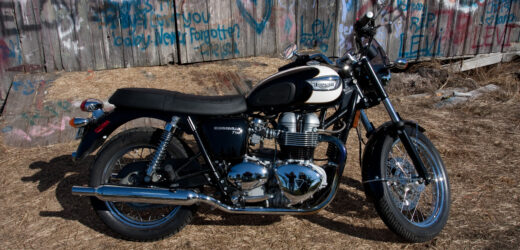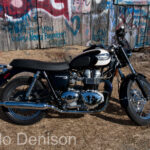The Royal Enfield Motorcycle Company can brag about being one of the oldest motorcycle brands in production. This is thanks to the company being in near-continuous operations since it was founded. The company’s lengthy history beginning with bicycles has gone through many iterations, owners, locations, and world wars, yet has stood the test of time.
When we hear the name Royal Enfield, we often think of India as the place where the motorcycle brand derives its heritage, but in fact it was originally a British motorcycle brand prior to the move to India. Hence the name Enfield. The original location of the factory was in Enfield, England. But it was moving to India that kept the company manufacturing motorcycles to where other historic British brands such as Triumph and Norton went out of business for a number of years before being revived.
Royal Enfield Motorcycle Early Years
Royal Enfield began with George Townsend and his son, owners of a sewing needle manufacturing company. They began making bicycle parts under the name Townsend and Ecossais in 1882, and by 1886 expanded into complete bicycle manufacturing. Because of financial hardships, in 1891 entrepreneurs Bob Walker Smith and Albert Eadie bought George Townsend & Co. The entrepreneurs took over running the business, changing the name to Eadie Manufacturing Company Limited.
In 1893, The Eadie Manufacturing Company received a contract to supply precision parts to the Royal Small Arms Factory of Enfield, Middlesex. Under the contract, they created a subsidiary company called the Enfield Manufacturing Company Ltd. Now manufacturing firearms parts and bicycles. The bicycles were renamed Royal Enfield’s and the trademark ‘Made Like a Gun’ was introduced. Royal Enfield produced bicycles at its Redditch factory until it closed in early 1967.
It was in 1901 that the first official Royal Enfield motorcycle was produced. The bike was designed by Bob Walker Smith and Jules Gotiet. It had a 1 1/2 hp Minerva engine that was essentially a bicycle with an engine bolted to the front down tube and a rawhide belt instead of a chain drove the rear wheel.
For a brief time from 1902, the company expanded into automobile manufacturing. But because of financial losses, the Enfield Autocar division was sold to Birmingham Small Arms Company (BSA) in 1907. The company also changed its name again to Enfield Cycle Co. Ltd.
In 1909, not long after that first 1 1/2 hp motorcycle, Royal Enfield released its first V-twin, with a 297cc Swiss-made Motosacoche engine. And in 1932 three versions of the legendary “Bullet” was released with 50, 350, and 500cc engines. All with inclined ‘sloper’ engines and twin-ported cylinder heads. They had a foot-operated gear change. In 1936 the 500cc Bullet was modified with the release of the Model JF. It featured an upright engine with a 4-valve cylinder head.
Royal Enfield The War Years
During both world wars Enfield supplied large numbers of motorcycles to the British War Department and also won a motorcycle contract for the Imperial Russian Government. Enfield used its 225cc two-stroke single and 425cc V-twin engines. They also produced an 8 hp motorcycle sidecar model fitted with a Vickers machine gun. One of the most iconic models was the 125cc WD/RE or “Airborne” motorcycle known as the Flying Flea. The 2-stroke motorcycles could be loaded into specially fabricated parachute cradles and dropped with paratroops behind enemy lines.
Royal Enfield Post-War Years
Post-war, Royal Enfield resumed production of the single cylinder overhead valve 350cc model G and 500cc Model J, with rigid rear frame and telescopic front forks. These were basic model motorcycles that had been reconditioned military models. And in 1948, the Bullet became the first British motorcycle to feature a frame with a rear swing-arm.
The Indian government in 1955 began looking for a motorcycle that the police and army could use for patrolling the country’s border. Enfield Cycle Company partnered with Madras Motors in India in forming Enfield of India. The motorcycle they went with was the 350cc Royal Enfield Bullet. Most of the components at the time were imported from England and assembled in India. But starting in 1957, Enfield of India acquired the machines necessary to build components in India, and by 1962 all components were made and assembled in India.
The late 60s and 70s hit Enfield in the same way it hit other British motorcycle brands with the influx of high-quality Japanese motorcycles being shipped around the world. Enfield was bought by investors E & HP Smith who sold Enfield to Norton Villiers in 1967, while Royal Enfield declared bankruptcy in 1967. Production of the Interceptor continued at Enfield’s underground facility at Upper Westwood, near Bradford on Avon, until its closure in June 1970. British Royal Enfield’s motorcycles received the same fate as every other manufacturer rolled into the Norton-Villiers-Triumph (NVT) Group- which was bankruptcy.
However, Enfield of India was still moving along and in 1977 Enfield India began exporting the 350cc Bullet to the UK and Europe. Through the 80s Enfield India continued to produce motorcycles while leaving the motorcycle design mostly unchanged.
In 1994, the Eicher Motor Group, which manufactures commercial vehicles and tractors, acquired Enfield India Limited. The founder, Vikram Lal, was a motorcycle enthusiast owning a Bullet himself. His son, Siddartha, would be tasked with rebuilding the Royal Enfield brand, also renaming the company Royal Enfield Motors Limited.
Siddartha’s vision was to return the brand to its former glory and expand globally. These changes included investment in upgrading and modernizing the bikes while maintaining the classic Royal Enfield styling. They began by producing the company’s first new bike in decades, the 500cc air-cooled single-cylinder Classic, which joined a new Bullet using the same engine. Then came the c535cc café racer Continental GT.
The Modern Royal Enfield
Royal Enfield continued to modernize and produce new models into the 2000s. Along with the Café Racer, Classic, and Bullet, they launched the Thunderbird cruiser in 2012. It features the first 5-speed gearbox used on a Royal Enfield since the 1960s.
Then in 2015 Royal Enfield, North America was established. With headquarters in Milwaukee, Wisconsin, it was the company’s first direct distribution subsidiary outside of India. Also, in 2015, the company purchased Harris Performance Products a UK motorcycle design and manufacturing firm. This allowed Royal Enfield to open the Royal Enfield Technology Center near Leicester, UK in 2017. So that Royal Enfield is now, once again, operating in the UK.
Royal Enfield sells motorcycles in over 50 countries, making it one of the largest motorcycle manufacturers in regard to sales globally.
Article also published to Substack






